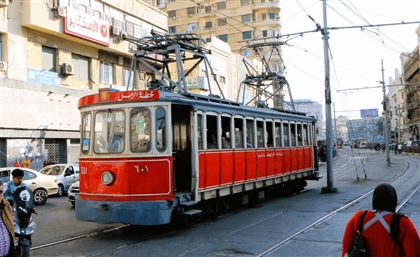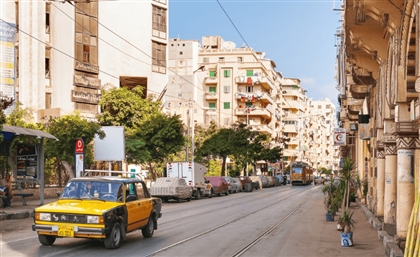Beneath Alexandria Lies a Roman Necropolis in Stone
Thirty meters under Alexandria, the Catacombs of Kom El Shoqafa hold a world where Roman, Greek, and Egyptian beliefs were carved together into the rock.
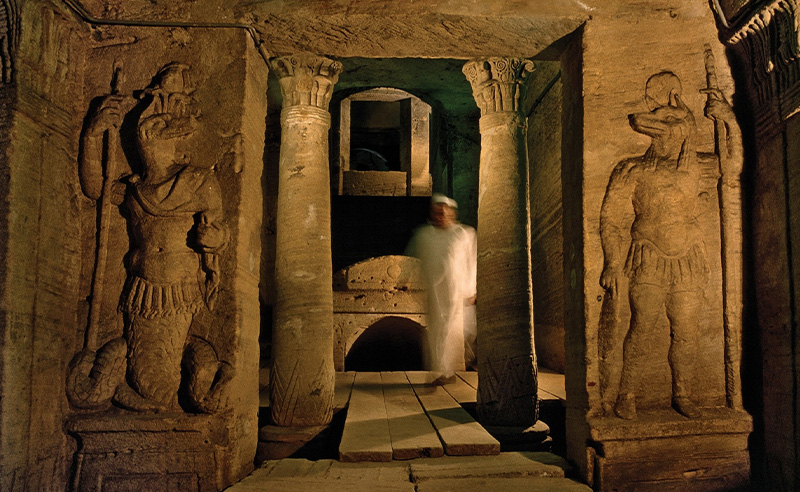
Somewhere deep in the heart of modern Alexandria, past the thrum of midday traffic and the chaos of satellite dishes and tangled wires, lies a quiet descent into the ancient. The Catacombs of Kom El Shoqafa—Arabic for “Mound of Shards"—are easy to miss. There are no looming colonnades or ostentatious façades above ground to signal their presence. Just a low entrance, modest and sun-blanched, tucked into the old Carmous district west of Pompey’s Pillar.
But thirty meters below the street, the silence thickens.
The catacombs were discovered by accident in 1900 when a donkey reportedly vanished into a hole in the ground—an apt metaphor, perhaps, for how so much of Alexandria’s Roman past has disappeared into the city’s layered depths. What the donkey found, and what archaeologists soon unearthed, was a vast necropolis carved directly into the bedrock during the 2nd century CE, likely during the Antonine era of Roman rule. Today, the site is considered one of the Seven Wonders of the Middle Ages.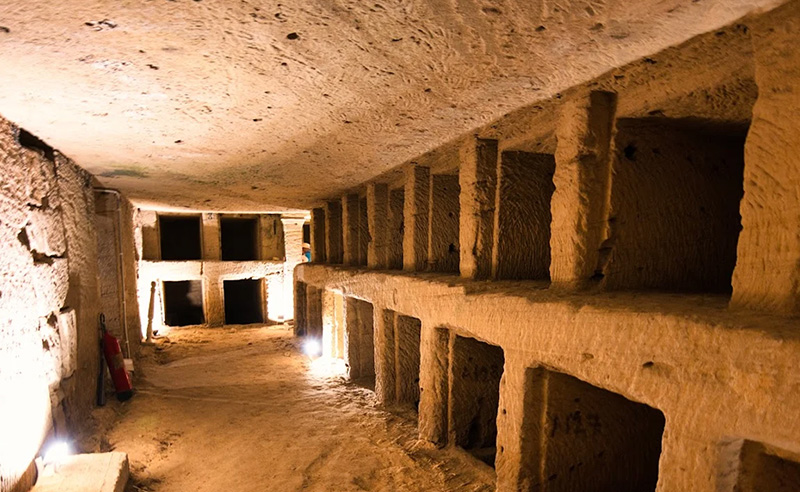 Altogether, the catacombs span three tiers and several chambers, forming one of the largest known Roman burial sites in Egypt. Originally built for a single affluent family, the necropolis was later expanded for communal use. Whether this shift came from necessity, generosity, or profit is—like so much of Alexandria’s past—lost to history.
Altogether, the catacombs span three tiers and several chambers, forming one of the largest known Roman burial sites in Egypt. Originally built for a single affluent family, the necropolis was later expanded for communal use. Whether this shift came from necessity, generosity, or profit is—like so much of Alexandria’s past—lost to history.
The descent begins at a spiral staircase, which once served as a practical pulley shaft for lowering bodies. Hollowed niches are still visible along the shaft walls, possibly once lit by lamps. The stairs circle around a central well, now dry, that draws the visitor’s eye downward. This architectural decision, both functional and ceremonial, marks the beginning of a slow immersion into the underworld of Roman Alexandria.
At the bottom of the staircase, the first chamber appears: a vestibule that opens into a six-pillared rotunda crowned with a domed ceiling. In the middle lies a circular opening to another shaft, which once functioned as the primary point of descent to the burial levels below. This uppermost tier houses the more ceremonial aspects of the catacombs.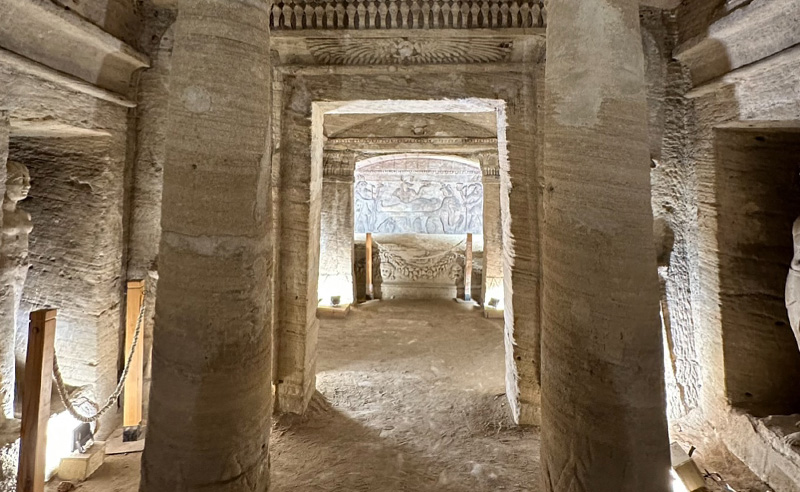 To the left of the rotunda is the triclinium, or banquet hall, which is an open space measuring approximately nine by eight and a half metres. There are still stone benches lining the walls where mourners would recline to share meals in honour of the deceased. It was here that the catacombs earned their name—archaeologists found heaps of broken terracotta plates and jars, funeral remnants that were shattered after use, never to be repurposed again.
To the left of the rotunda is the triclinium, or banquet hall, which is an open space measuring approximately nine by eight and a half metres. There are still stone benches lining the walls where mourners would recline to share meals in honour of the deceased. It was here that the catacombs earned their name—archaeologists found heaps of broken terracotta plates and jars, funeral remnants that were shattered after use, never to be repurposed again.
Beyond the rotunda lies the principal tomb chamber with a design that halts the visitor in place: a façade carved to resemble a miniature temple, complete with twin columns crowned by a hybrid of Egyptian papyrus and lotus motifs, intertwined with acanthus leaves, an unmistakable Greco-Roman flourish. Above these, a carved winged sun disk spreads its wings wide, flanked by Horus falcons, gazing out with eternal vigilance.
Step inside, and syncretism becomes the dominant language.
Three fixed-lid sarcophagi are embedded in the chamber walls, inaccessible except by a service passage that allowed bodies to be inserted from behind. Contrary to an initial inspection, these are not simple coffins. Each one is adorned with carved garlands and niches, shaped to hold the remains of up to three individuals. Reliefs show Anubis, the jackal-headed Egyptian god of embalming, dressed in Roman military uniform, a legionary’s tunic and boots. Nearby, there is an etched head of Medusa serving a kind of Greek protective symbol, while images of the Apis bull and Isis add another layer of Egyptian funerary iconography.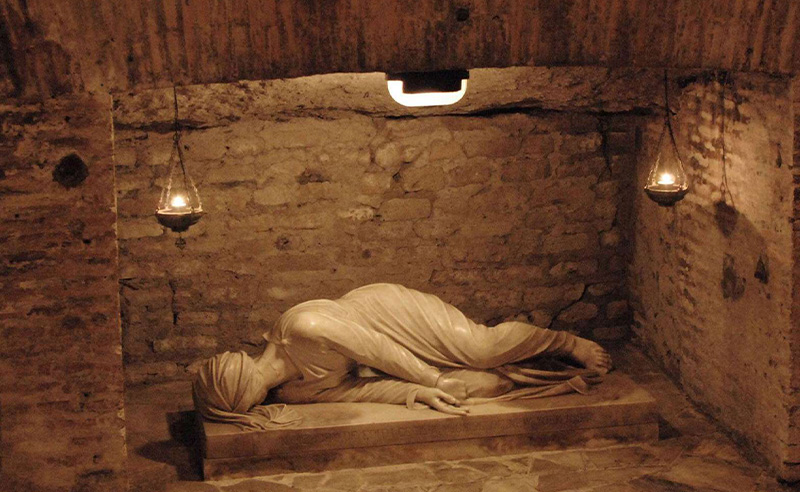 In no other place within the catacombs does one find a more potent depiction of such startling polytheism.
In no other place within the catacombs does one find a more potent depiction of such startling polytheism.
Off one of the side passages lies a peculiar annex: the Hall of Caracalla. Named after the Roman emperor who infamously ordered a massacre in Alexandria around 215 CE, this chamber contains a tangled history. Human and horse remains were found here, buried unceremoniously. Some scholars believe it to be a communal grave for young Christian men and their horses, slaughtered in the emperor’s purge. Others interpret it as a later addition with an uncertain function.
Deeper still, the catacombs continue, though the lowest tier is now submerged due to groundwater seepage. To this day, it remains inaccessible. Archaeologists believe this bottom level held additional tombs, perhaps once reached by the same shaft that connects the upper levels. What lies beneath remains unknown.
And yet, even in partial silence, the site speaks.
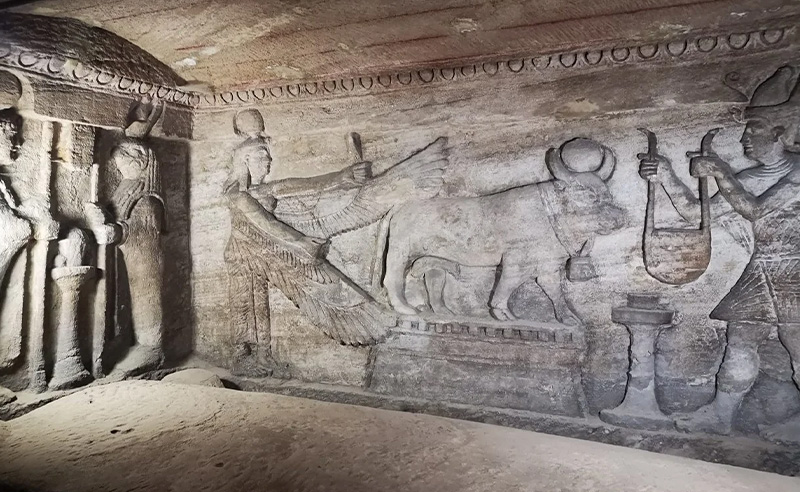
The Catacombs of Kom El Shoqafa reveal a city in flux—a place where Egyptian, Greek, and Roman cultures didn’t just coexist, but collided, fused, and reformed into something wholly Alexandrian. Here, the dead were laid to rest beneath symbols from all three traditions—perhaps in search of a unity that eluded the living. And as you descend into the depths of the catacombs, so too do you fall into the folds of a city that was never just one thing—but always, somehow, all things at once.
- Previous Article R3D, Shabjdeed & Al Nather Drop Music Video for 'Umro2'
- Next Article Refugees in Egypt Surpass One Million as UNHCR Faces Funding Crisis
Trending This Week
-
Nov 17, 2025








